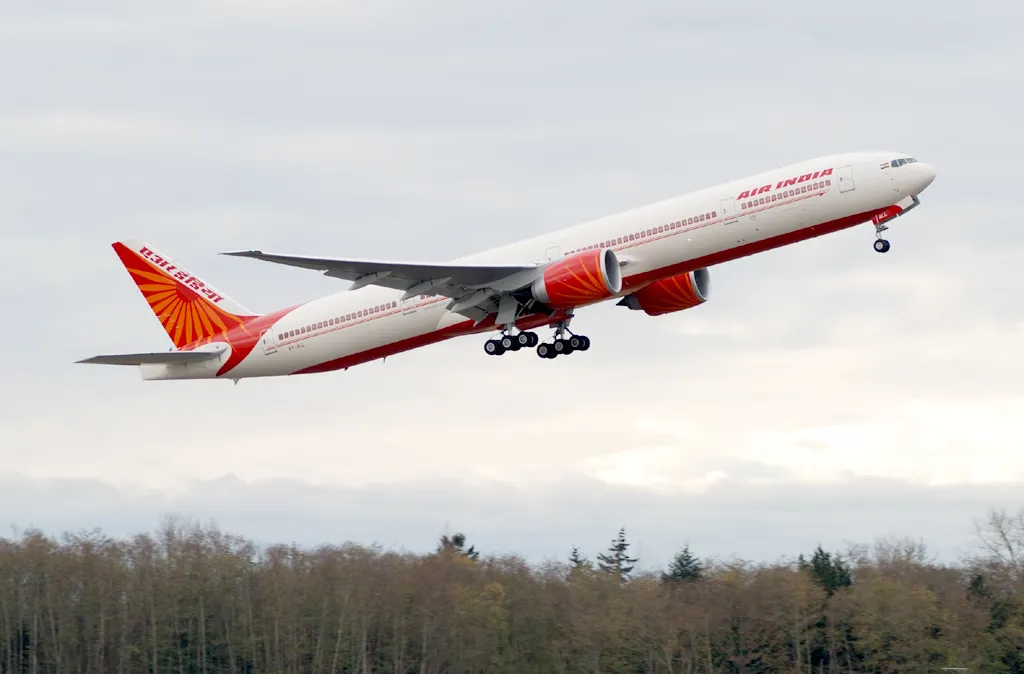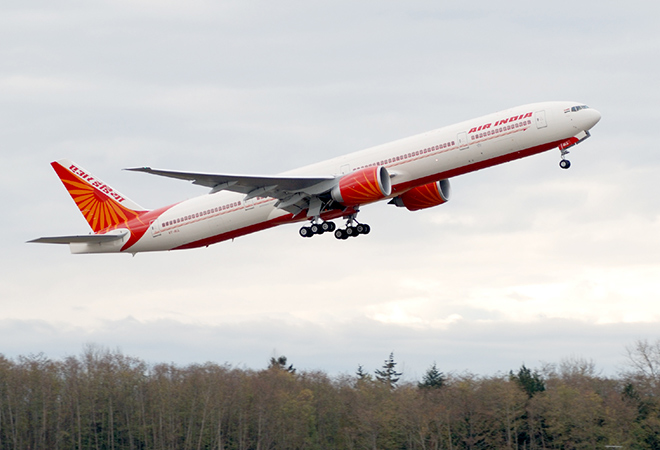
As the nation heaves a sigh of fiscal relief and the burden of financial waste in one of India’s worst-performing public sector enterprises (PSEs), Air India, shifts to the Tata Group, there are two men and a brave corporation that need to be thanked.
First, Prime Minister Narendra Modi for providing the political conviction for economic reforms. This is a courageous move around an organisation that has been wallowing in tax-funded politics of entitlements, which stalled the disinvestment process during Prime Minister Manmohan Singh’s government. The timing of Modi’s reforms conviction and executive force stands out even as he negotiates one of India’s greatest agricultural reforms through the three farm laws. And second, former Civil Aviation minister Hardeep Puri, who has persistently nursed the process since 2017, including facing the flak for a failed first round of disinvestment and modifying it to make it attractive to both the government and potential bidders. Puri has to be lauded for managing the nitty-gritty, balancing the various interests, and ensuring this policy push.
The brave corporation in this case is the Tata Group, through its company Talace Pvt Ltd, a subsidiary of Tata Sons. It is brave because Air India has degenerated into an airline of the employees, for the employees and by the employees, who are overpaid and over-perked (including but not restricted to a flying allowance for pilots who don’t fly at all and free international air tickets for themselves and their families). Managing these employees, whose interests would be “taken care of,” will remain a challenge in an industry whose currency of success is service efficiency, an idea that’s not part of the organisation’s DNA.
The INR 18,000 crore enterprise value deal includes its subsidiary Air India Express and Air India SATS Airport Services but excludes Air India’s INR 14,718 crore worth of non-core assets, including its well-located real estate, which will be transferred to Air India Asset Holding. The competing bid came from a consortium led by Ajay Singh for an enterprise value of INR 15,100 crore, after five other bidders were disqualified.
The transaction will be completed in two months, by December 2021, and the Tata Group will need all its skills to manage this. It has done so successfully in the case of a similar organisation, VSNL, in 2002, so it may well be able to repeat it with Air India. For the Tatas, this is as much a sentimental purchase as a business decision—the company was unceremoniously snatched away from the group in 1953.
The story of nationalisation of assets in the past
Sixty-eight years later, when we view the law through which this happened, it gives us several insights into how not to manage the economy. The nationalisation of Air India, along with the nationalisation of India’s entire civil aviation industry, is among the worst economic policy decisions of Prime Minister Jawaharlal Nehru. This is not because of the decision per se, several prime ministers have made several policy mistakes. This is not even because the decision was taken in a sublime ignorance of the importance of the catalyst force the civil aviation sector has to the larger economy. That too can be overlooked. What can’t, is the political victory of this ideological overhang on the economy, the violation of incentives for businesses, the uncertainty for wealth creators, the fear for job creators. Under the Air Corporations Act, 1953, Nehru nationalised nine airlines—Air India, Air Services of India, Airways (India), Bharat Airways, Deccan Airways, Himalayan Aviation, Indian National Airways, Kalinga Airlines, and Air India International—and brought them under two PSEs, Indian Airlines, and Air India International. Overnight, the business of running airlines by private citizens was made illegal, with punishments ranging from a minimum fine of INR 1,000 to a maximum imprisonment for three months, or both—for each flight, under Section 18(2).
Under the Air Corporations Act, 1953, Nehru nationalised nine airlines and brought them under two PSEs—Indian Airlines, and Air India International. Overnight, the business of running airlines by private citizens was made illegal.
While Nehru’s Resolution of 1948 had already isolated entrepreneurs to the fringes of India’s economic activity, the political success of this single experiment consolidated government’s attitude against the private sector (anti-capital policies delivered ideological-political applause). It powered Nehru’s ideas for crafting the Industrial Policy Resolution of 1956, and his daughter Prime Minister Indira Gandhi’s industrial policies of 1973 and 1980. Above all, it cleared the hurdles for the serial nationalisation of several other sectors. Nationalisation became the go-to policy fix for any problem in the economy.
For instance, three years after the civil aviation nationalisation, Nehru followed through by nationalising life insurance in 1956, with a pompous statement that had ideological roots but no economic branches: “The nationalisation of life insurance is an important step in our march towards a socialist society.” Through the Life Insurance Corporation Act, 1956, Nehru nationalised 154 Indian insurers, 16 non-Indian insurers, and 75 provident societies into a single entity, Life Insurance Corporation of India (LIC). Again, LIC has degenerated into an organisation of the agents, by the agents and for the agents, with little concern for or interest in consumers; its partial disinvestment must become complete privatisation.
Indira Gandhi followed through. Effective 19 July 1969, she nationalised 14 banks through the Banking Companies (Acquisition and Transfer of Undertakings) Act, 1970; the law was enacted more than eight months later, on 31 March 1970, but was deemed to have come into force earlier. The ostensible reasons for this nationalisation were to remove control of the few; provide adequate credit for agriculture, small industry and exports; give a professional bent to bank management; and encourage a new class of entrepreneurs. None of them materialised. Despite this visible policy failure, she followed up with a second round of bank nationalisation in 1980, through which she nationalised another six banks.
Between these two rounds of bank nationalisations, Indira Gandhi nationalised general insurance in 1972. Through the General Insurance Business (Nationalisation) Act, 1972, she nationalised the general insurance business of 55 Indian companies and the 52 foreign insurers. She also nationalised coal mines through four rounds, in 1971, 1972, 1973 and 1975.
Every sector that was nationalised languished. The lack of accountability, the pretentious and ‘noble’ objectives served only the political class and its attached bureaucracies. Films such as Kala Patthar (1979) crafted and strengthened powerful narratives around this financial emergency in the form of nationalisation. Systematically, entrepreneurs were turned into the bad guys of India. To that extent, the first experiment with nationalisation, Air India and eight other airlines, has been a stupendous success till 1991, when Prime Minister PV Narasimha Rao began to reverse the trend, and which under Modi has accelerated.
The way forward
Of all privatisations, that of Air India has been the most contentious. That it has taken Modi, the most reformist prime minister after PV Narasimha Rao, seven years to go through with it shows how deeply entrenched this idea and the ecosystem that coalesced around it is. Now that this hurdle is out of the way and taxpayers’ monies will not be wasted any longer in financing the luxuries of Air India employees, Modi needs to push forward with the privatisation of other PSEs, beginning with refiner BPCL and insurer LIC. But these too are just for starters. Waiting in the wings are Indian Oil and HPCL, telecom white elephants MTNL and BSNL, and a series of banks.
Not governments, not bureaucrats, not public sector employees: India’s future businesses need to be run by businesspersons, who have skin in the game. The role of the government is to enact and ensure a legal and regulatory mechanism that enables private enterprises to take root, create jobs, pay taxes, and build wealth. In the 21st century, and from a perch of a US $2.7 trillion economy, they need to take wing and attain global scale. From the taxes paid and value created by these enterprises, the government can do what’s needed in a middle-income country like India—expand healthcare, deepen education and build infrastructure.
Not governments, not bureaucrats, not public sector employees: India’s future businesses need to be run by businesspersons, who have skin in the game. The role of the government is to enact and ensure a legal and regulatory mechanism that enables private enterprises to take root, create jobs, pay taxes, and build wealth.
And here, we need to ensure that extractive and expropriative ideas such as nationalisation are placed where they belong—in the darkest shelves of policy libraries. They must be studied and analysed carefully, particularly from the point of view of entrenched beneficiaries and the hijack of taxpayers’ money for private gains. And never repeated. The disinvestment in Air India and the return to its Tata roots is a laudatory step in that direction.
The only hurdle that can stall this process is the judiciary. As taxpayers, we hope the courts do not entertain any public interest litigation that reverses this disinvestment process. Over the past few decades, we have seen enough tactics that abuse the process of law and use the judiciary for private gains. The disinvestment process that began with the compulsion of Narasimha Rao in 1991 has matured into the conviction of Narendra Modi in 2021. This journey must cont inue.
inue.
The views expressed above belong to the author(s). ORF research and analyses now available on Telegram! Click here to access our curated content — blogs, longforms and interviews.





 PREV
PREV


